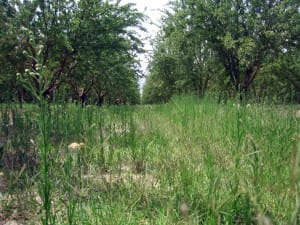 A federal Appeals Court has rejected a challenge to the controversial raw almond treatment regulation. The decision was primarily based on procedural grounds, stating that questions of legality of the treatment mandate and the authority of the USDA to impose it should have been raised during the review period for the draft regulation in early 2007.
A federal Appeals Court has rejected a challenge to the controversial raw almond treatment regulation. The decision was primarily based on procedural grounds, stating that questions of legality of the treatment mandate and the authority of the USDA to impose it should have been raised during the review period for the draft regulation in early 2007.
As you may know, California’s raw almonds are no longer truly raw. The USDA, at the request of the Almond Board of California, began requiring in 2007 that raw almonds be treated with a process generously described as “pasteurization.” The rule mandates either the gassing of the raw nuts with a toxic fumigant (propylene oxide) or treatment with high-temperature steam-heat. (Click here for a factsheet on the matter.)
The scheme, as noted in the past by Cornucopia, has imposed a significant financial burden on California’s small-scale organic and conventional growers, lacks scientific justification, and has damaged domestic almond markets (imports are exempt from the rule).
The raw almond treatment rule does not address agricultural practices, something that could have led to the contamination incidents. And, amazingly, the treated almonds can still be deceptively labeled as “raw“!

Cornucopia has been helping a group of California almond farmers fight the objectionable rule. These farmers are fighting to overturn the almond treatment rule and return truly raw California almonds to the American marketplace. They contend that the USDA exceeded its authority, which is narrowly limited to regulating quality concerns in almonds such as dirt, appearance and mold. Furthermore, they argue that even if the USDA sought to regulate bacterial contamination, the questionable expansion of its authority demanded a full evidentiary hearing and a producer referendum, to garner public input ” neither of which were undertaken by the USDA.
Following the recent Appeals Court ruling, the farmers are weighing an additional challenge, which could lead to the U.S. Supreme Court. For more information and to help the farmers in their legal fight, visit Action for Almonds at www.actionforalmonds.org.

